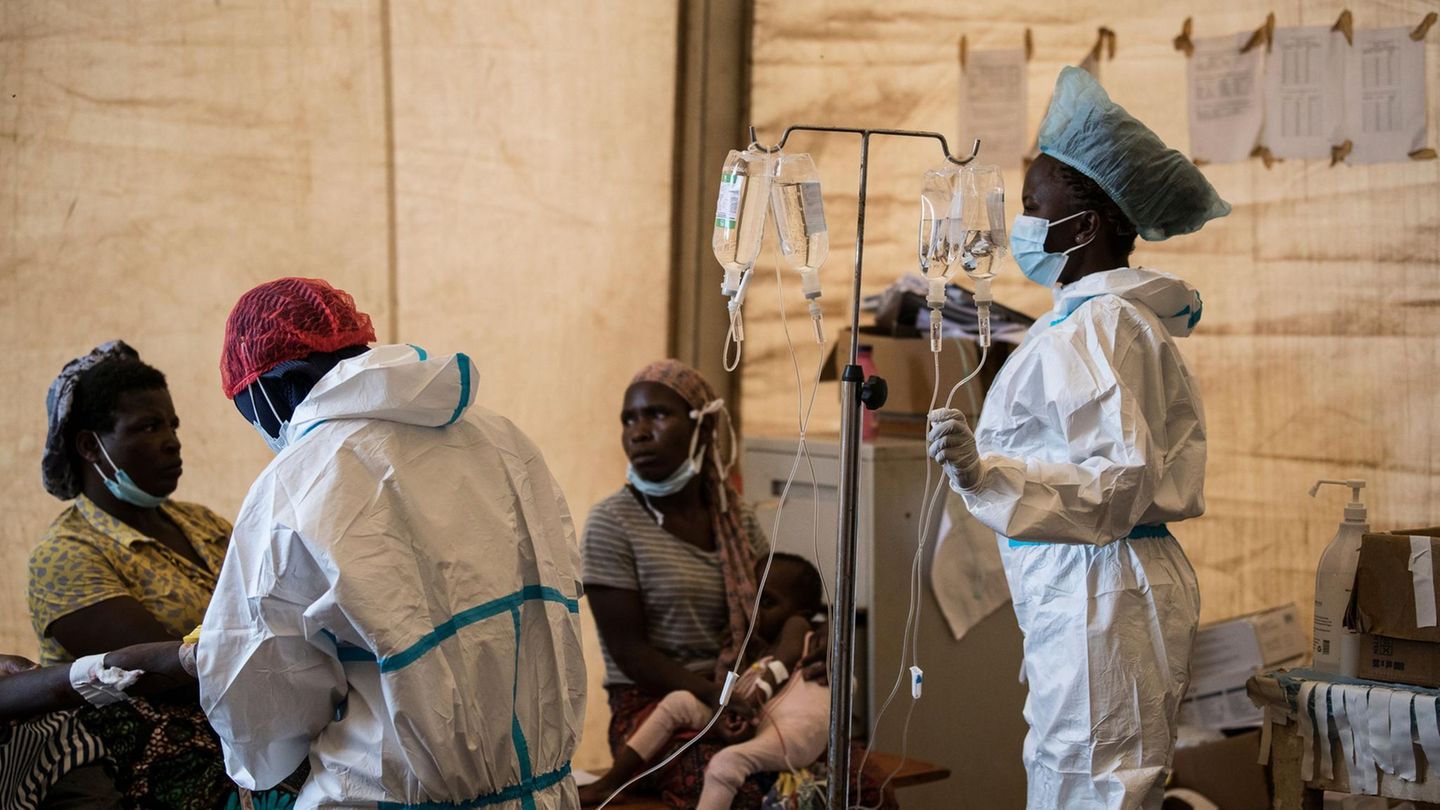In over 20 countries
Cholera epidemic in Africa: “It will get worse”
Copy the current link
Add to the memorial list
An immense Cholera epidemic hits the weakest people. Helpers live dangerous, funds for development aid have broken away – and now the rainy season comes.
The African Health Authority Africa CDC raised the alarm this week: choler eruptions on the continent are not only reported from more and more countries – currently 23 -, they are also becoming fatal. The mortality rate of the 205,000 cases recorded so far this year is 2.1 percent, according to Ngashi Ngongo, Supreme CDC crisis representative for response to outbreaks. It was 1.9 percent last year. But these are average figures – if the conditions on site are bad, mortality can be drastically higher.
Cholera meets the weakest and the poorest
Cholera is caused by bacteria and spreads primarily through contaminated water. Those affected suffer from aqueous diarrhea. Deaths are mainly due to massive dehydration. It usually affects the weakest and the poorest – people who live under cramped conditions and without access to clean drinking water in the slums of the big cities or in neglected rural regions, often malnourished and with a weakened immune system.
The UN Children’s Aid Work Unicef warned that at the beginning of the rainy season in West and Central Africa, more than 80,000 children are exposed to a high cholera risk. Because when the typical rain of falls flooded, faeces from latrines get into fountains and rivers, from which many people draw their water.
Missing investments in sanitary infrastructure and vaccines
The CDC recently criticized the fact that a lack of investments in sanitary infrastructure contribute to the increase in cholera eruptions. In South Sudan, one of the particularly affected countries, only 16 percent of the population have access to sanitary facilities. In Sudan, only 35 percent of the residents have access to clean water. CDC General Director Jean Kaseya criticized the undersupply of cholera vaccines at a meeting with African heads of state. 54 million vaccine doses would be needed on the continent annually, but only half should be obtained: “This gap is unacceptable.”
Dramatic location in crisis regions
The situation is particularly dramatic where conflicts and a bad security situation make the work of helpers difficult and dangerous – for example in the Eastern Congo, where several million people are fleeing from the attacks of various militias. Or in Sudan, where a bloody power struggle has been raging since April 2023 and more than twelve million people have fled before fighting.
Alarming conditions are mainly reported there from the North Darfur region, in which, according to UN, famine threatens. There are already 4,300 cholera cases there, according to the UN refugee aid. The number of cases also increases in Tawila, where around 370,000 people fled the Samsam refugee camp after the Miliz RSF’s attack. On -site employees report catastrophic hygienic conditions. There is no latrine, clean water and medical care.
“Too weak to survive”
“People die because they are too weak to survive,” says another aid organization a man named Samir fled after Tawila. “People sleep on the street, without a tent or protection against rain – and the rainy season has just started. It will be much worse.”
Time is all the more urgent because many refugees are severely malnourished and relief supplies can only be brought to Tawila from the neighboring chad on a day trip. If you arrive there at all and are not confiscated on the numerous roadblocks of militias. Once the rainy season is in full swing, the streets through the mountain massif jebel Marra should be impassable for weeks.
Almost 1,000 cholera deadlines in the Congo
In regions such as Darfur, Süd-Kordofan and Blauer Nil, where 80 percent of the hospitals are closed and over 60 percent of the water treatment plants are out of operation, an effective reaction to the crisis was hardly possible, warned the aid organization action against hunger. According to the Ministry of Health, there is already almost 1,000 cholera deadlines in the Democratic Republic of Congo. The tropical doctor Maximilian Gertler from the Berlin Charité was a few weeks ago for the aid organization doctors without borders in the province of Tshopo in the northeast of the huge country, where the cholera broke out in March.
Increasingly financial gaps by eliminating auxiliary funds
Gertler reports from an “incredibly high” mortality rate of 20 to 30 percent in the early phase of the outbreak to the intervention of the auxiliary teams. Everything was missing on site, also on disinfectants for contaminated water. In view of the poor infrastructure of the region, medical material or chlorine must be transported via the Congo and its side flows. But then the mortality rate can be reduced below 1 percent very quickly.
The example shows that there are successful strategies against cholera. The funds are necessary, such as vaccines or improvements in hygiene. But there are increasingly financial gaps.
“Now it also sees very clearly that partners who have financed something like this so far,” said Gertler of the German Press Agency, for example, with a view to the work of the development aid authority USA-stopped by the US government. “What people are coming up will probably not be seen in the next few months.”
ckl
Source: Stern
I’m Caroline, a journalist and author for 24 Hours Worlds. I specialize in health-related news and stories, bringing real-world impact to readers across the globe. With my experience in journalism and writing in both print and online formats, I strive to provide reliable information that resonates with audiences from all walks of life.





